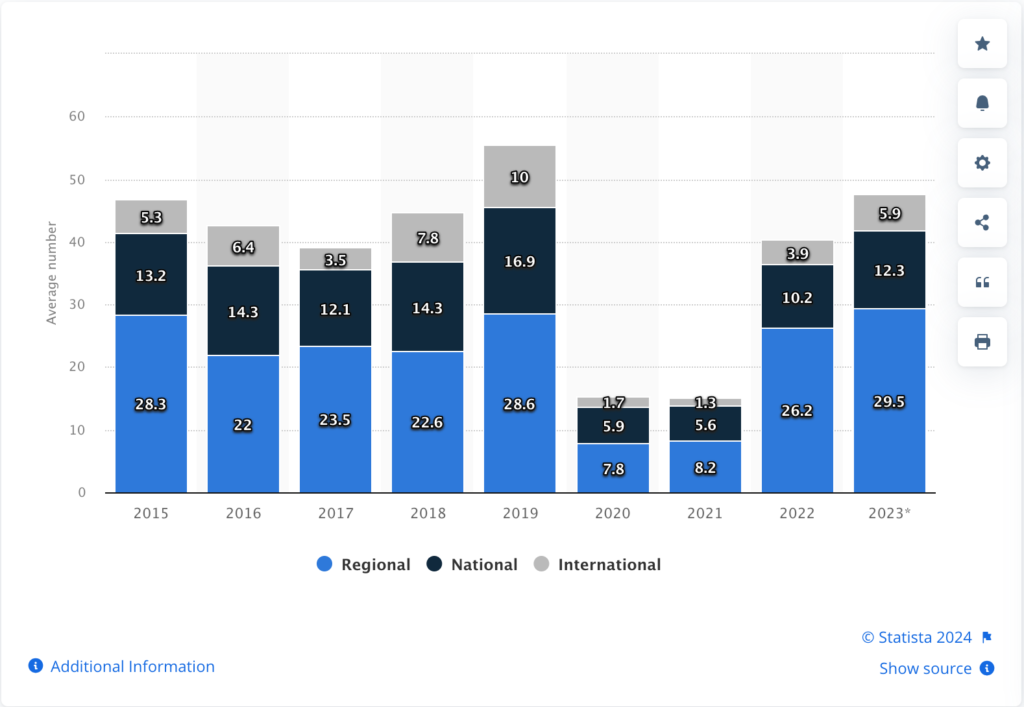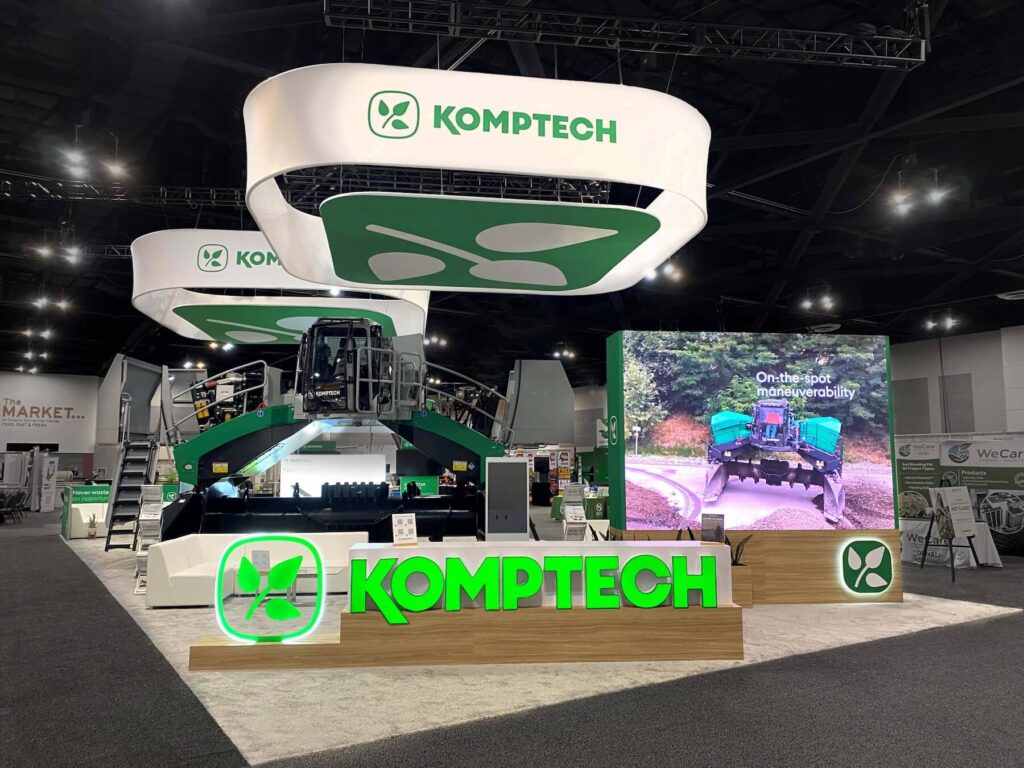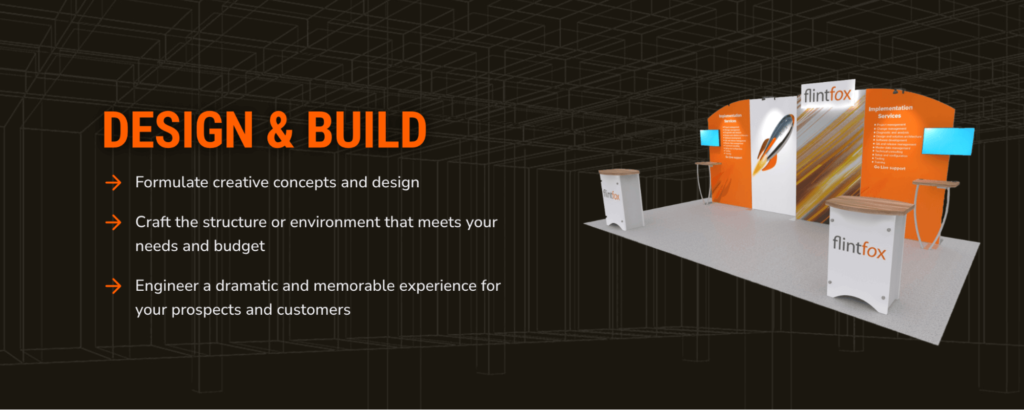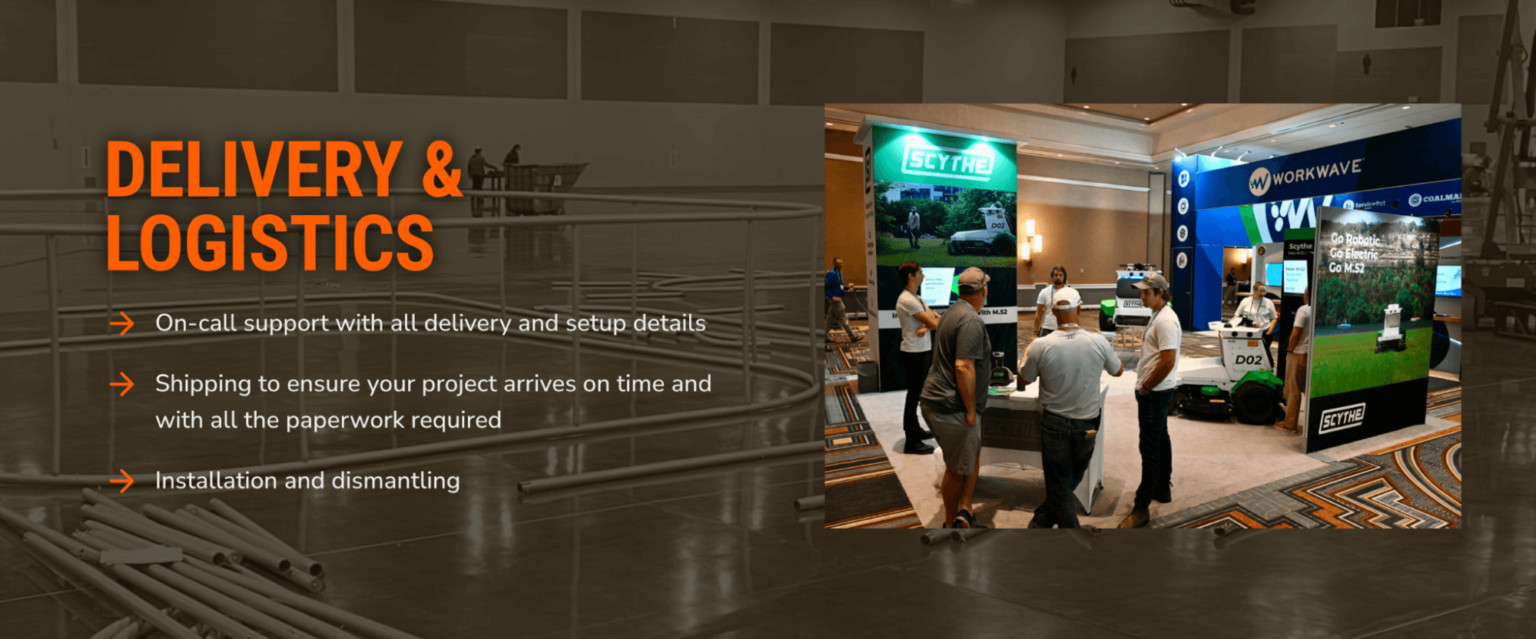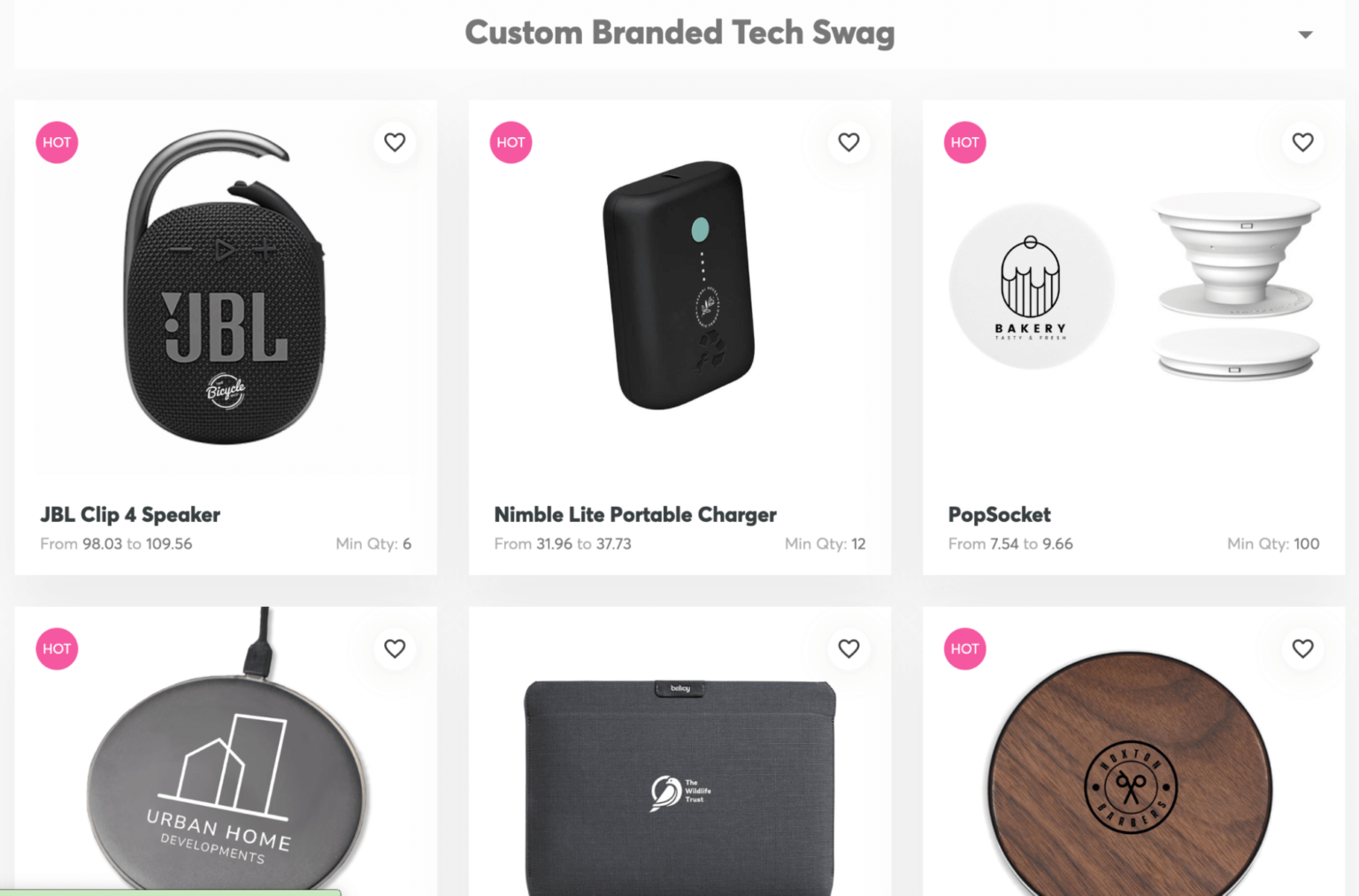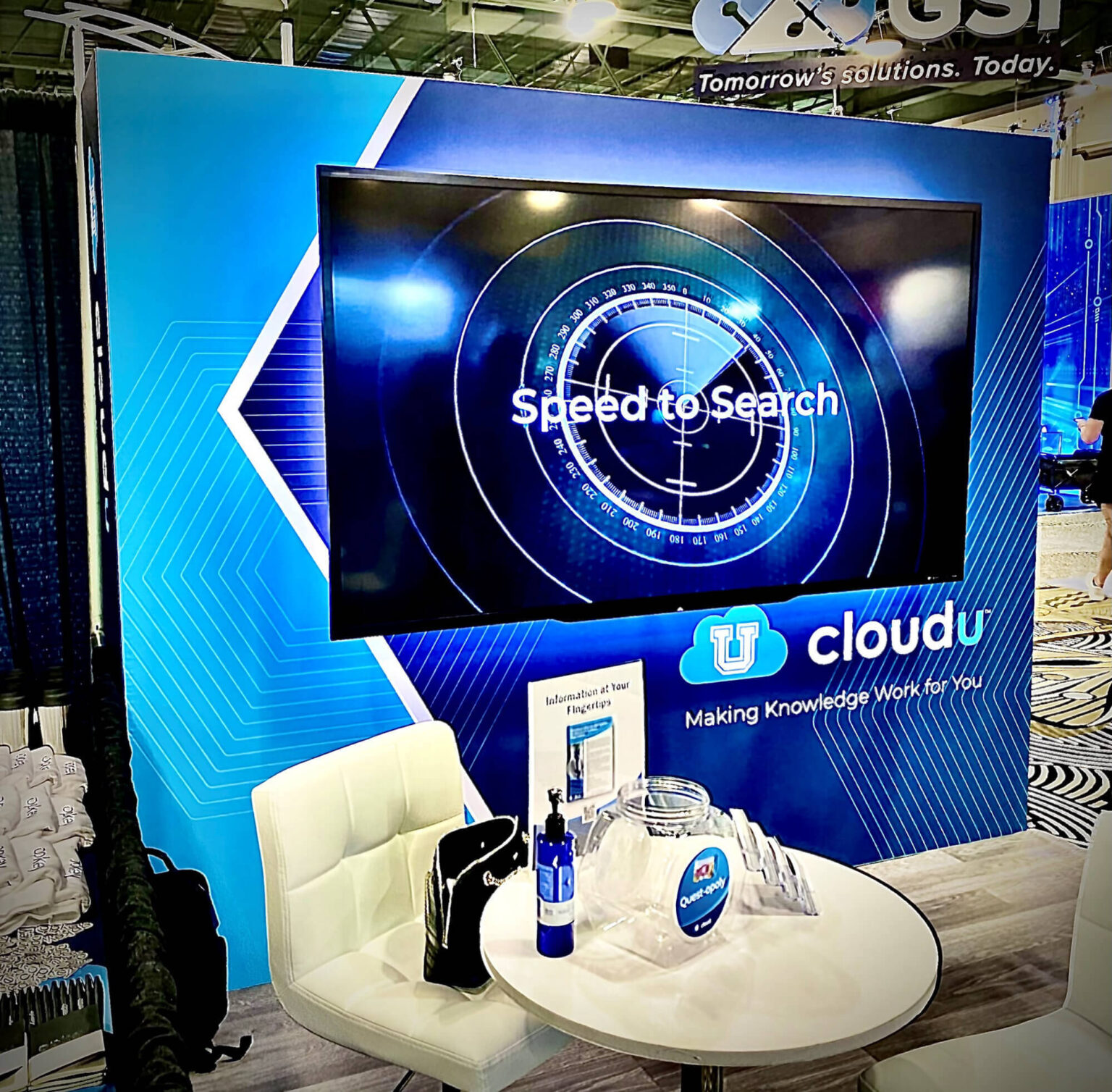
Introduction to the importance of trade shows for the exhibitor
Ahh, the beloved trade show.
We have been through it the last few years in the exhibit and trade show industry, haven’t we? If you think the trade show market is dwindling, think again. B2B trade shows have bounced back tremendously post-Covid, with a staggering and rising recovery close to pre-pandemic numbers from 15.58 billion U.S. dollars in 2019 plummeting during the outbreak internationally, projecting a rebound worth noting to 14.5 billion this year. While national and international events haven’t quite regained their pre-pandemic stature, regional trade shows are averaging higher than ever.
If you’re new to exhibiting or you’re a veteran marketer, you might be a little rusty with the ways we have had to pivot in the last four years. In 2024, the trade show will play a crucial role in re-connecting businesses with their target audience and revitalizing networking while energizing the entire event industry. With the right preparation and execution, trade show events can be a powerful tool for generating leads, building brand recognition, and fostering valuable connections.
This go-to trade show checklist will guide you through what you need to know to have an impact on the attendees and unlock the limitless potential of B2B events for now and in the future. We will cut through the clutter and give you some meaty recommendations diving into the ultimate checklist for trade show success.
So, grab a beverage, and let’s maximize the impact you can have on and off the exhibit floor.
Why a well-planned exhibit matters
Trying to plan an event and differentiate from the other exhibitors on the event floor can be daunting from the think tank. Remember, 81% of trade show attendees are actually major decision-makers. CEOs fly in, have meetings, and blow off steam. But, at the event between keynote speeches and pre-planned meetings, they are looking for new vendors and partners to grow their own businesses. They are strategic about who they are there to see and catching their attention is challenging. Their schedules are packed with dinners and events all the way to and from the airport. Your well-planned exhibit isn’t just a space; it’s a strategic tool to capture and convert these opportunities. Make it count.
This above statistic alone should reinforce the importance of having a well-planned exhibit that goes beyond merely occupying a space with a wrinkled tablecloth, a table, some chairs and a backdrop that poorly represents your company. The days of just showing up are not in your favor either. A lot of the work happens before you get there. ROI is top of mind for companies post-pandemic, looking for evergreen opportunities to capture the lost revenue of years prior.
When it comes to trade show ROI, it all begins with meticulous event planning and execution. A strategic approach can make all the difference in standing out from the crowd and maximizing your chances of attracting potential clients. By paying attention to the essential elements of your trade show exhibit, you can create an impactful and memorable experience for the trade show attendee.
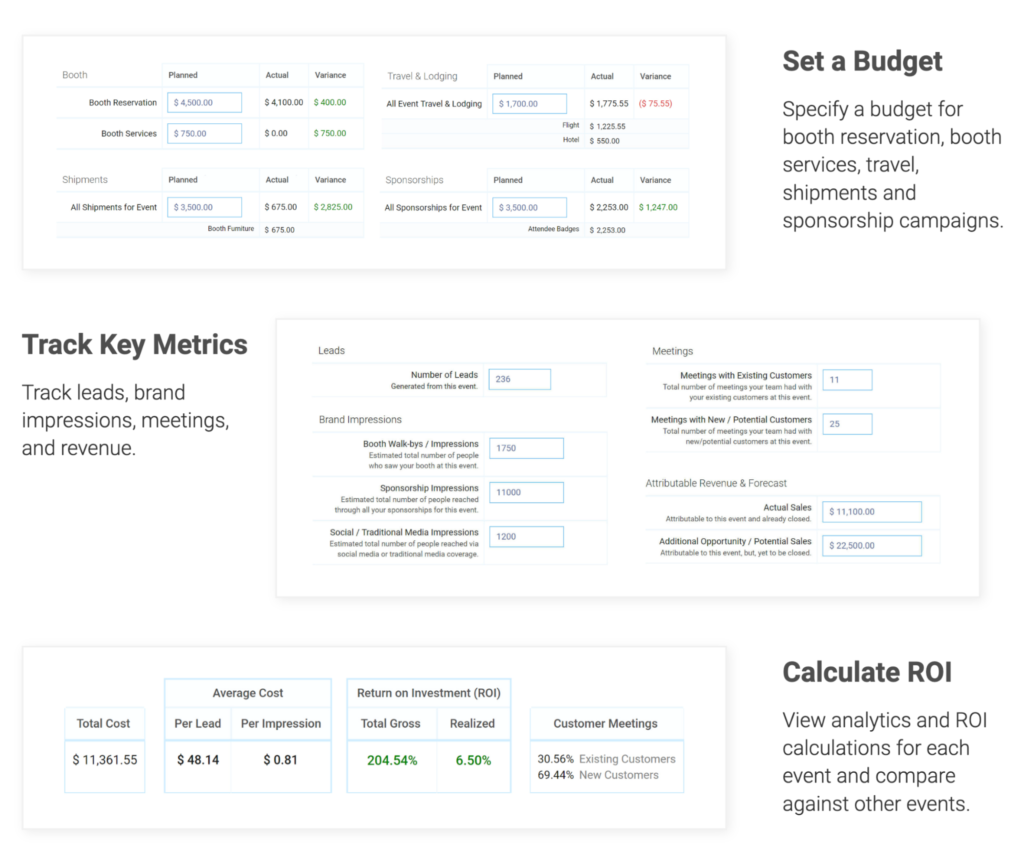
Booth Design
First and foremost, consider your booth design. Your booth should serve as a visual representation of your brand and effectively communicate your message in a way that stands out from your competitors, while attracting your demographic. Make it visually appealing, ensuring that it aligns with your company’s overall aesthetic and branding guidelines. The booth layout should be intuitive and allow for easy navigation, encouraging attendees to explore and engage with your offerings. Take them on a journey through your booth like you would your office.
Exhibit Style
Have you ever walked the show floor of a large exhibit hall during a show like NAB? It’s filled with over a thousand exhibitors from 10x10s to 10×20 inline booths, to large custom island exhibits ranging in size, scope, and structure. Internationally, you will see a lot of rented booth space with build and burn exhibits.
Deciding how much of a footprint you need to make, will depend on several key factors:
Goals and objectives
What are your goals and objectives for exhibiting in the trade show? Ask yourself what you want to achieve – whether it’s generating leads, showcasing new products or services, or building brand awareness.
Budget
Next, consider your budget. How much can you allocate towards the booth space and exhibit design? Keep in mind that larger exhibits often come with higher costs, including booth rental fees, construction, logistics, storage, union costs, and staffing.
Target audience
Another important consideration is your targeted customer. Who are you trying to reach at the trade show? Understanding your ideal customers’ preferences and behaviors can help determine the size and style of your exhibit. For instance, if your audience appreciates interactive experiences, you might need more space for engaging activities.
Competition
Additionally, think about the competition and the overall layout of the exhibit floor. Will your booth be located in a prime spot or a more hidden area? If you’re in a highly competitive industry, you may want to invest in a larger booth to stand out and attract more attention.
Logistics
Lastly, logistics play a role. Consider the ease of transportation and setup for your exhibit. Will it fit within the exhibition hall’s size restrictions? Can you efficiently assemble and dismantle it within the time allotted? Or, will you have to pay a union?
By carefully considering your goals, budget, attendee, competition, and logistics, you can determine the appropriate size of your trade show booth, ensuring that you make a strong impact on the show floor.
Booth Staff
Another crucial aspect to consider is staffing your exhibit. They play a vital role in representing your brand and making a lasting impression on attendees. Ensure that your staff is well-trained and knowledgeable about your products or services. They should be approachable, enthusiastic, and equipped with the skills to engage potential clients in meaningful conversations. A well-prepared and friendly staff can significantly influence attendees’ perception of your brand and increase the likelihood of conversions.
Promotional items
In addition to a captivating design for your exhibit and competent staff, promotional items are powerful tools for creating brand awareness and leaving a lasting impression. Consider offering unique and useful promotional products that align with your brand identity. These items should be of value to attendees, prompting them to engage with your brand even after the trade show ends. When choosing promotional items, think about their relevance, durability, and practicality to ensure maximum impact.
If you offer products, then prepare mini swag bags and create a demand on the show floor. Create a line and you have the definition of buzz. When people see others wanting, they psychologically want too. In a sea of pens and branded lanyards, think about items that can fit in a suitcase and will keep you in their mind. Give them a reason to follow up with you when they get back home.
Marketing materials and collateral
Alongside the perfect promotional item, marketing materials and collateral are essential for trade show marketing. Create high-quality brochures, flyers, and business cards that showcase your products or services in a visually appealing and informative manner. These materials should effectively communicate your brand’s story, values, and unique selling propositions. Make sure to include your contact information and any special offers or promotions to entice attendees to reach out to you after the event.
Trade show games
Don’t overlook the power of trade show games to create a buzz and attract attendees to your booth. Games serve as interactive and entertaining ways to engage your attendees. Incorporate games that are not only enjoyable but also relevant to your brand or product. Offer prizes or incentives for participation, further incentivizing attendees to visit your booth and learn more about what you have to offer.
Set clear goals and objectives
Lastly, remember to set clear goals and objectives for your trade show participation. Knowing what you aim to achieve will help you prioritize and tailor your strategies accordingly. Whether it’s generating leads, building your brand recognition, or closing deals, your goals should guide every decision you make during the planning and execution stages.

To sum it all up, trade shows offer a significant opportunity to engage with potential customers who have decision-making authority. To make the most of this opportunity, it is crucial to have a well-planned exhibit that goes beyond just occupying a space. Your booth style and design, staffing your exhibit, promotional items, marketing materials, interactive event games, and goal-setting play pivotal roles in ensuring a successful trade show experience. By paying careful attention to these essential elements and incorporating them into your trade show strategy, you can ignite your exhibit with purpose and power, capturing and converting valuable opportunities along the way.
But, what about the unions?
It is crucial to acknowledge the role of unions in event marketing and consider their implications. Understanding union regulations, anticipated costs, and strategies to work with or avoid them is essential for success. By proactively addressing these factors, exhibitors can effectively navigate potential challenges and make informed decisions related to union involvement. This proactive approach helps optimize expenses and ensure smooth operations during trade show participation.
Navigating Union Regulations
Trade shows can be a maze of union rules and regulations. But fear not! Knowledge is your key.
Dealing with unions on the trade show floor can be a complex aspect of participating in trade shows, especially in locations where labor unions have a strong presence. Understanding and navigating union rules effectively can help you avoid high costs and ensure a smoother experience. Here are some tips for dealing with unions and managing costs:
Understand Union Jurisdictions
Different unions may have jurisdiction over different aspects of trade show setup and operation. It’s important to know which unions you’ll be dealing with and what their specific roles and rules are. For example, some unions handle electrical installations, while others may deal with booth construction or material handling.
Familiarize Yourself with Union Contracts
Review the union contracts for the trade show venue to understand the terms and conditions. Pay special attention to rules about what you can and cannot do yourself, as some tasks must be performed by union labor.
Plan and Communicate in Advance
Contact the trade show organizer or the union representative well before the show to discuss your plans and any potential union involvement. Clear communication can help avoid misunderstandings and unexpected costs.
Use Pre-Approved Contractors
If you’re hiring contractors for booth setup, dismantle, or other services, use contractors who are pre-approved or recommended by the trade show organizer. These contractors are usually familiar with the union rules and can navigate them more effectively.
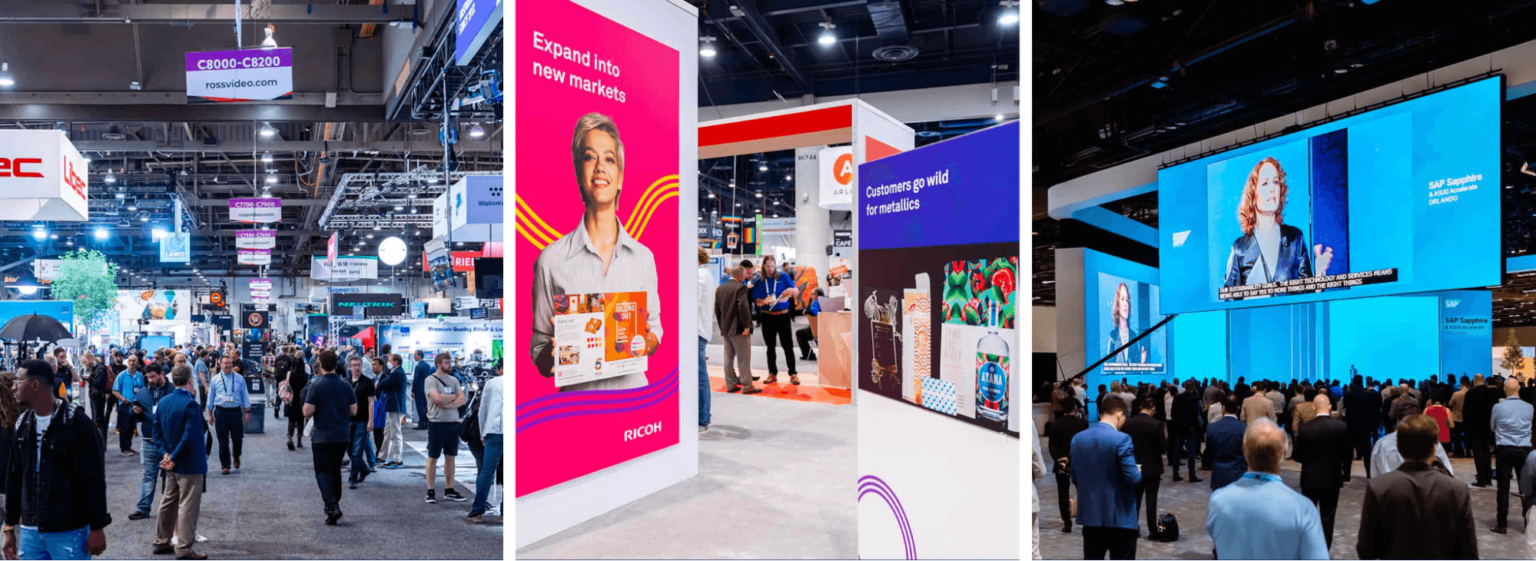
Limit On-site Work
To reduce dependence on union labor, try to do as much pre-show preparation as possible. For example, pre-assemble components of your booth off-site to minimize on-site assembly. Or utilize your exhibit house for install and dismantle.
Understand Material Handling Fees
Material handling (drayage) can be a significant cost. Understand these fees and consider ways to minimize them, such as using lightweight materials or consolidating shipments.
Educate Your Team
Make sure your team is aware of what they can and cannot do on the trade show floor. Sometimes, simple tasks like plugging in a device or moving a chair can incur union fees if not allowed.
Negotiate When Possible
In some cases, there may be room to negotiate with the unions, especially if you are a frequent exhibitor or have a large presence at the show.
Budget Accordingly
Factor in union labor costs into your overall trade show budget. Being prepared financially can help avoid surprises.
Seek Advice from Experienced Exhibitors
Connect with businesses that have experience in dealing with unions at trade shows. They can offer valuable insights and tips based on their experiences.
Creating a pre-show exhibitor checklist
Success lies in the details, especially the ones often overlooked:
Union Navigation
Understand the union requirements specific to your trade show location.
Cost-Saving Tactics
Rent equipment, choose lightweight materials, and consider shared shipping.
Booth Staff Training
Ensure your team knows the product/service and is engaging and approachable.
We will say it again: Setting clear objectives and goals for your trade show
Envision your success with laser-focus. Set goals that challenge and excite you. Whether it’s lead generation, networking, or brand exposure, make every interaction at your booth a stepping stone to these goals.
Designing an eye-catching trade show booth on a budget
Wow your audience without breaking the bank. Use creativity over cash. Opt for modular designs, rent furniture, and use digital displays for versatility and cost-effectiveness. Remember, less can be more if it’s done right.
Pre trade show marketing strategies
Create a pre-show buzz that’s cost-effective. Leverage social media, email marketing, set up meetings beforehand, and cross-promotions. It’s about being visible and engaging before the show even starts.
Post-show follow-up and analysis
Your efforts don’t end when the show does. Follow up with new contacts within 48 hours of returning from your event. Analyze your results against your goals. Each trade show is a stepping stone to refining your strategy.
The Brave Exhibits Advantage
Enter Brave Exhibits, your ultimate partner in trade show success. From navigating union complexities to designing a booth that captures your brand essence, Brave Exhibits is your domestic and international ally in making every exhibit, event, environment or digital experience an undeniable success. With their expertise, watch as your business presence transforms from ordinary to extraordinary. Check out their success stories and book a strategy call with the team.
Conclusion
Armed with this comprehensive checklist, including these often-overlooked yet vital tips, you’re set to dominate the trade show scene. Remember, it’s not just about being present; it’s about making a powerful impact. Partner with Brave Exhibits and unlock your full trade show potential. Let’s make your next trade show not just an event, but a milestone in your business’s journey to ROI!
